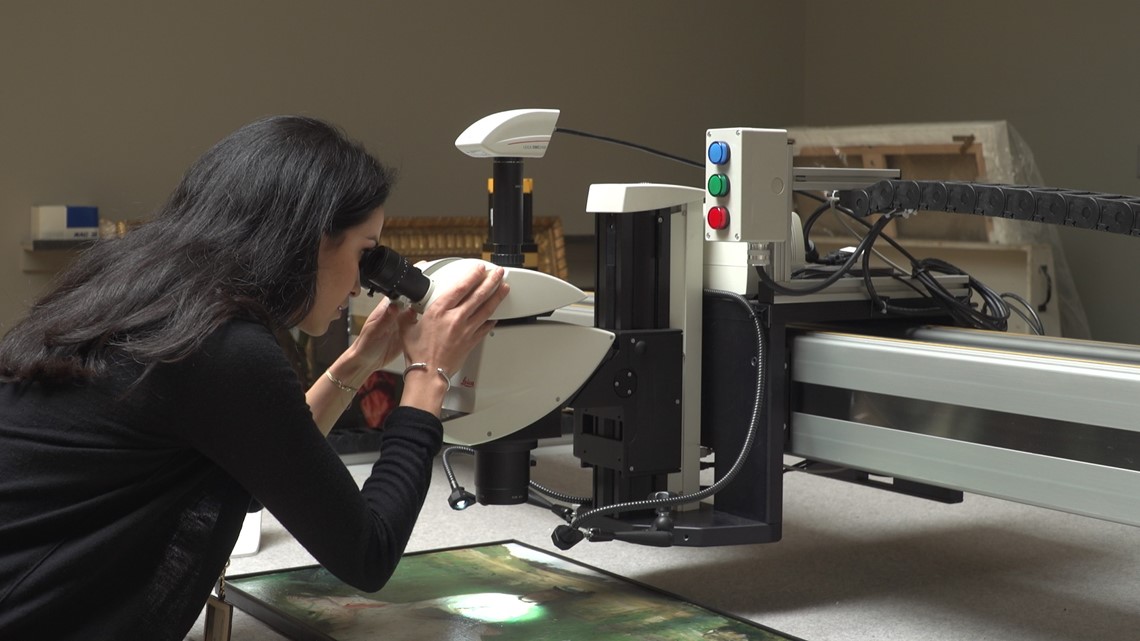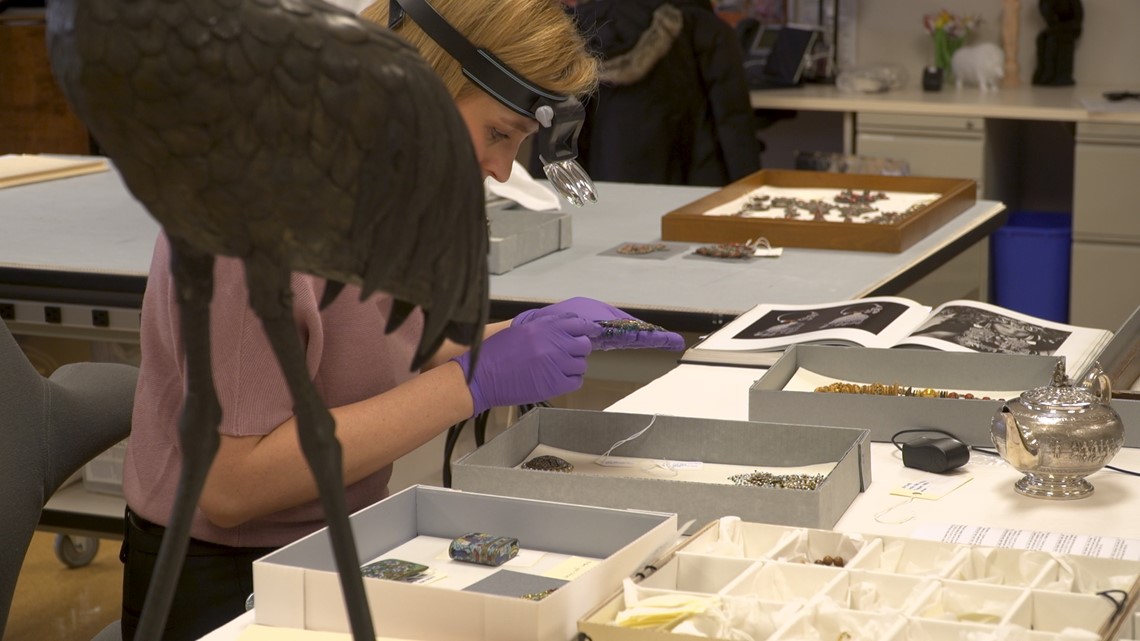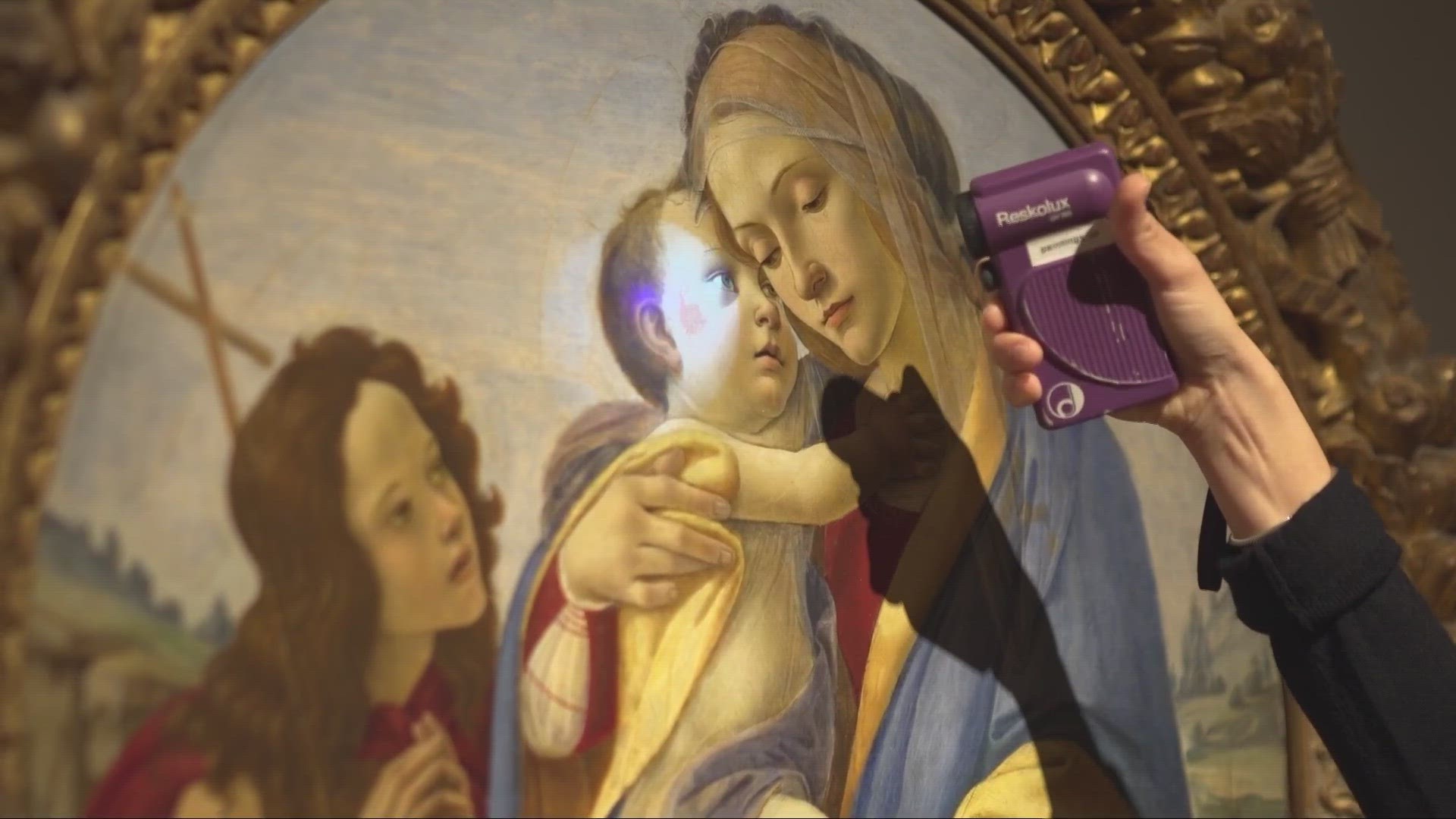CLEVELAND, Ohio — The Cleveland Museum of Art is home to more than 45,000 objects spanning 6-thousand years. In a single trip you can take in works by Picasso, Dali, and Botticelli, just to name a few.
But our world class institution has something else to offer. Amazing careers in STEM. Yes, in fact, math and science do blend seamlessly with art.
Our first stop, “Virgin and Child with the Young Saint John the Baptist.” This is a 15th century work by Sandro Botticelli. Our eyes take in the colors, brush strokes of the oil painting. Assistant Conservator Julianna Ly has a different view, when using a form of infrared imaging.
“We can see artists sketches, we can see areas that they’ve actually changed the composition,” said Ly.
The technology essentially peeks through paint to reveal a carbon sketch below. “You can see the child’s face was actually shifted in position. The child’s arm also, kind of, extended around Madonna’s neck and was holding her,” Ly said of how the sketch differs from the final work.
This is just one example of art intersecting with science. STEM is vital in the study, preservation, and conservation of art.
“The reason we study so much chemistry, which you might not think of when you look at an artwork, is because we have to really understand the makeup of the materials that they are made from, how they’re made and how they interact,” said Colleen Snyder, Conservator of Objects, as she showed us around the Riemenschneider and Late Medieval Alabaster exhibition.


Conservators are trained to use techniques, often borrowed from other fields. They are in – in a sense – investigators: finding, documenting and sometimes treating potential problems, not visible to the naked eye.
“I took an x-ray and discovered that his hand had broken a number of times. That’s really one of the thinnest, most delicate areas in the sculpture. And somebody placed pins in those breaks and repaired them over time. It really gives us a lot of good information about the sculpture itself,” Snyder said of Saint Jerome and the Lion, created by Tilman Riemenschneider in 1495.
Isotope analysis of these alabaster figures can also tell where a stone was quarried. The information obtained can then potentially link the work to other sculptures.
In the analytical lab, a marble sculpture is examined, cleaned, and undergoes small repairs before it goes out on loan. Part of the cleaning process? Laser.


“It's just removing the dirt from the surface without affecting the marble itself. it works particularly well with dark soiling on light surfaces, so it's really perfect for this kind of application,” according to Beth Edelstein, who is head of the objects lab at CMA.
Technology, fine-tuned in the 21st century, is the painter's brush for conservators - whose combined love for visual arts and science - is preserving precious works of cultural heritage -- for generations to come.
“And it’s only when you find out about the field of conservation that you are like, “Oh I can put both of these together!” And it’s so incredible,” said Snyder.

